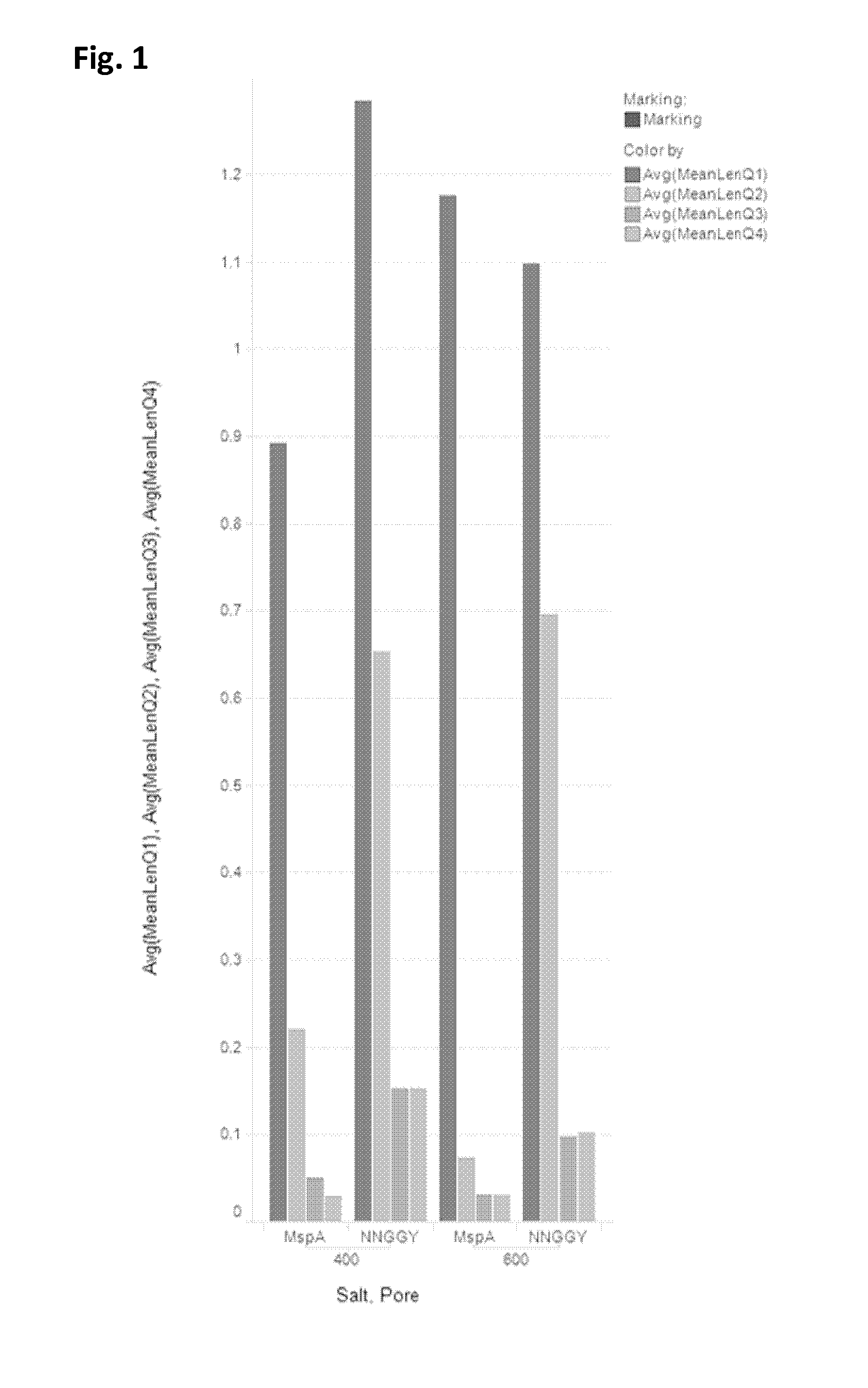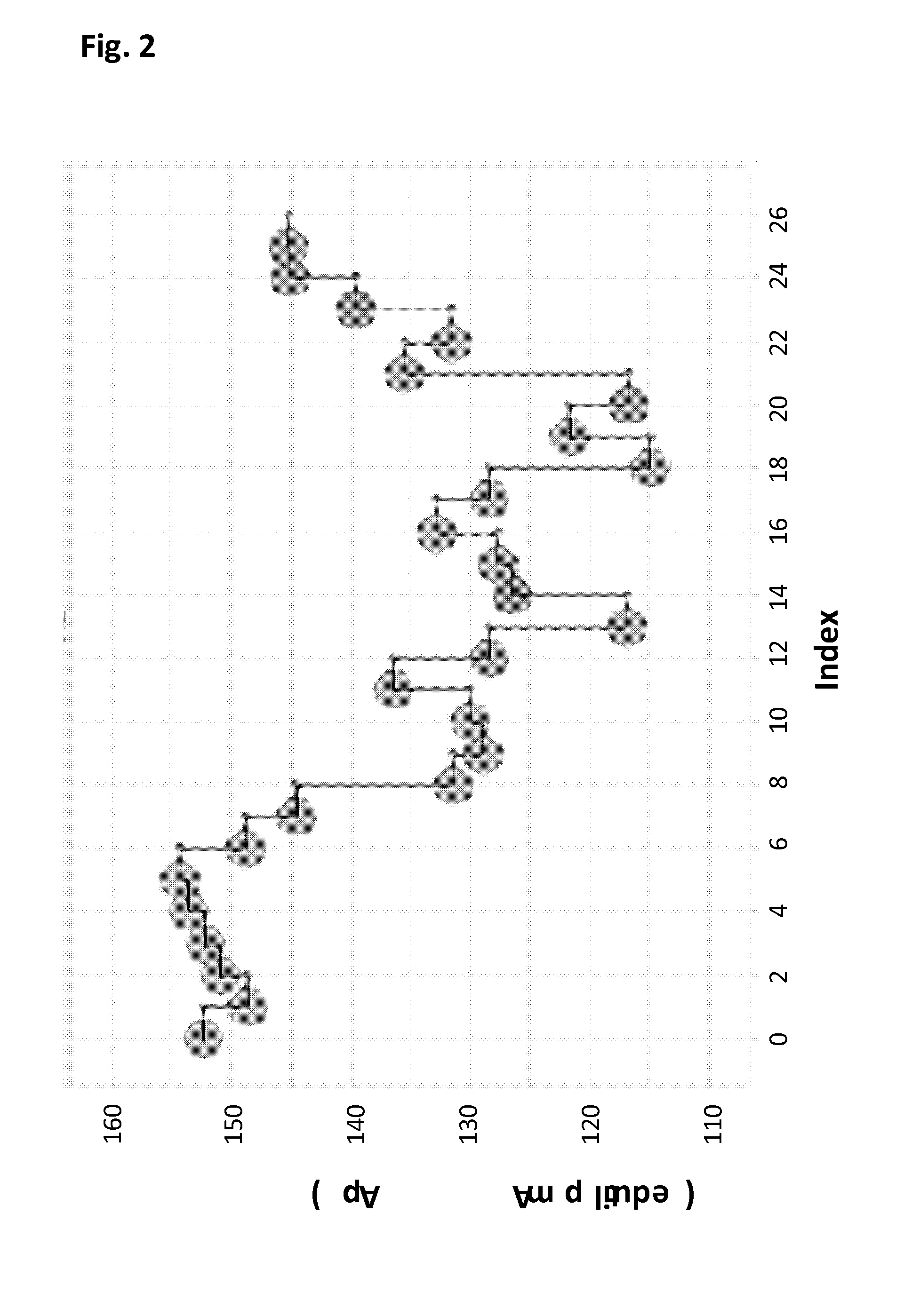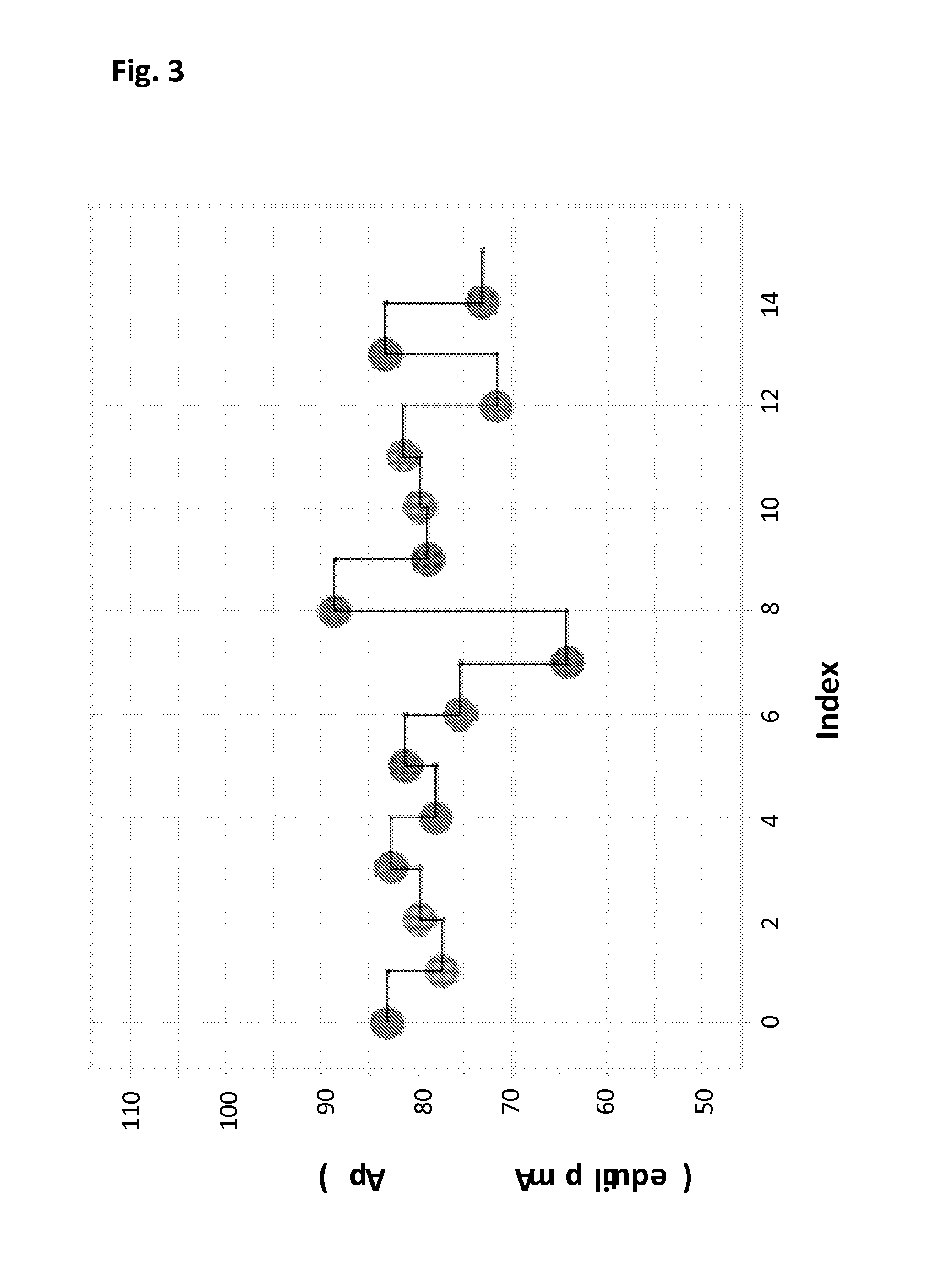Mutant pores
a technology of mutant pores and pores, which is applied in the field of mutant forms of msp, can solve the problems of increasing the signal-to-noise ratio, and achieve the effects of improving nucleotide discrimination, improving current range, and improving estimation properties
- Summary
- Abstract
- Description
- Claims
- Application Information
AI Technical Summary
Benefits of technology
Problems solved by technology
Method used
Image
Examples
example 1
[0351]Homo-oligomers are pores where all the monomer units are identical. As the monomer units will self-assemble, these are the simplest constructs to produce. Our strategies for improving the base reader properties can be split into categories:
[0352]Sterics (increasing or decreasing the size of amino acid residues)
[0353]Charge (introducing +ve charge to interact with DNA)
[0354]Hydrogen bonding (residues that can hydrogen bond to the base pairs)
[0355]Pi Stacking (amino acids that interact through delocalised electron pi systems)
Increase Sterics / Pi Stacking (all NNN-RRK Background):
[0356]Sterics—substitution for residues with bulk (e.g. Phenylalanine, Tryptophan, Tyrosine, Histidine)
Pi Stacking—substitution for aromatic residues (e.g. Phenylalanine, Tryptophan, Tyrosine, Histidine)
[0357]In all the following tables (6-11), the mutations made to SEQ ID NO: 2 are shown. B1=SEQ ID NO: 2.
TABLE 6MS-(B1-D91Y)8Bulky Tyrosine at the constriction.MS-(B1-D90G / D91Y)8Bulky Tyrosine at the constr...
example 2
[0359]Different monomer units can be combined to create novel oligomer pores. When the oligomer contains more than one different subunit (e.g. MS-(MutA)6(MutB)1(MutC)1), the pore is a hetero-oligomer. Hetero-oligomers typically only have one unit modified (e.g. MS-(MutA)7(MutB)1). Other ratios of hetero-oligomers could also be formed (e.g. MS-(MutA)6(MutB)2). Subunits may also include SEQ ID NO: 2.
[0360]The advantage of hetero-oligomers is that a single chemical change can be made to the pore (rather than introducing a change to every monomer-unit). This is a less drastic change to the structure than a homo-oligomer and may allow residues to be introduced into the pore at a position which did not work for a homo-oligomer. A single residue interacting with the DNA may be beneficial compared to multiple units (e.g. a single Arg on a hetero-octamer, compared to eight Arg on an octamer). Mutants can also be combine to produce different effects at the same residue, an example of this wou...
example 3
Introduction of a Single Reactive Residue for Chemical Modification
[0365]
TABLE 15MS-(B1)7Addition of single Cysteine in the barrel.(B1-D90C)1MS-(B1)7Addition of single Cysteine in the lumen.(B1-D118C)1MS-(B1)7Addition of single Cysteine for nucleic acid binding(B1-G54C)1protein attachment.
PUM
| Property | Measurement | Unit |
|---|---|---|
| voltage | aaaaa | aaaaa |
| voltage | aaaaa | aaaaa |
| voltage | aaaaa | aaaaa |
Abstract
Description
Claims
Application Information
 Login to View More
Login to View More - R&D
- Intellectual Property
- Life Sciences
- Materials
- Tech Scout
- Unparalleled Data Quality
- Higher Quality Content
- 60% Fewer Hallucinations
Browse by: Latest US Patents, China's latest patents, Technical Efficacy Thesaurus, Application Domain, Technology Topic, Popular Technical Reports.
© 2025 PatSnap. All rights reserved.Legal|Privacy policy|Modern Slavery Act Transparency Statement|Sitemap|About US| Contact US: help@patsnap.com



